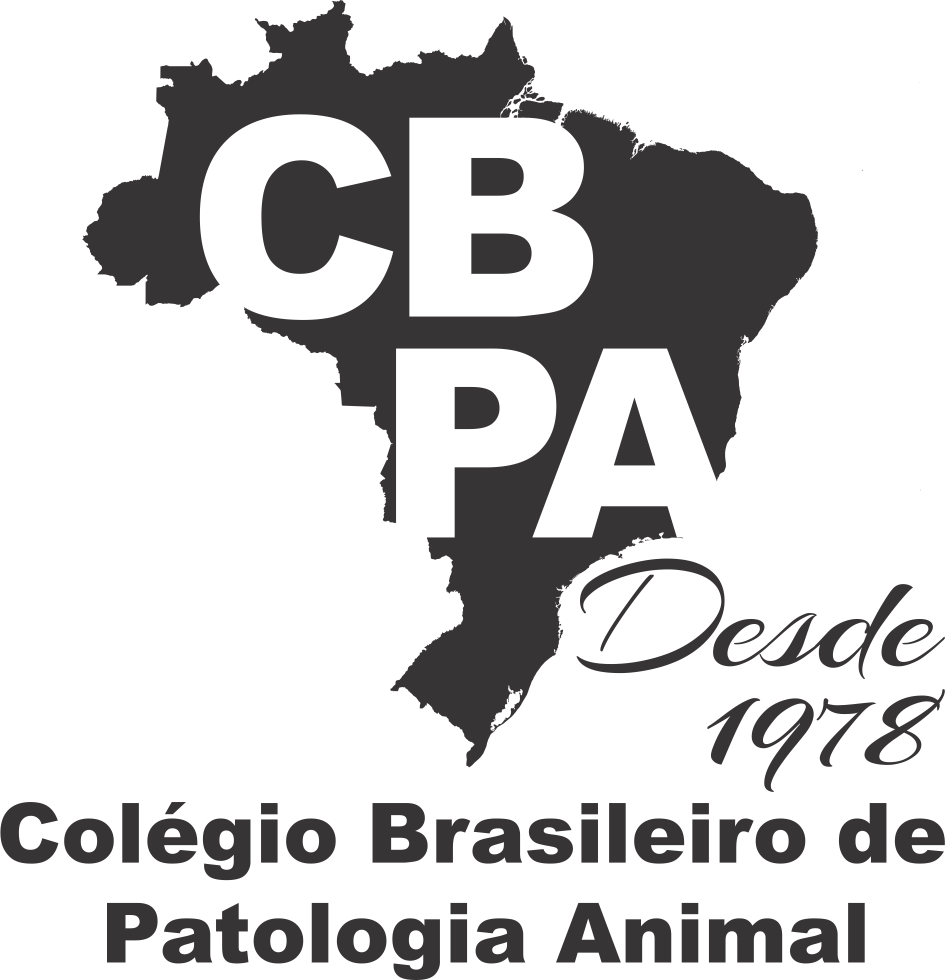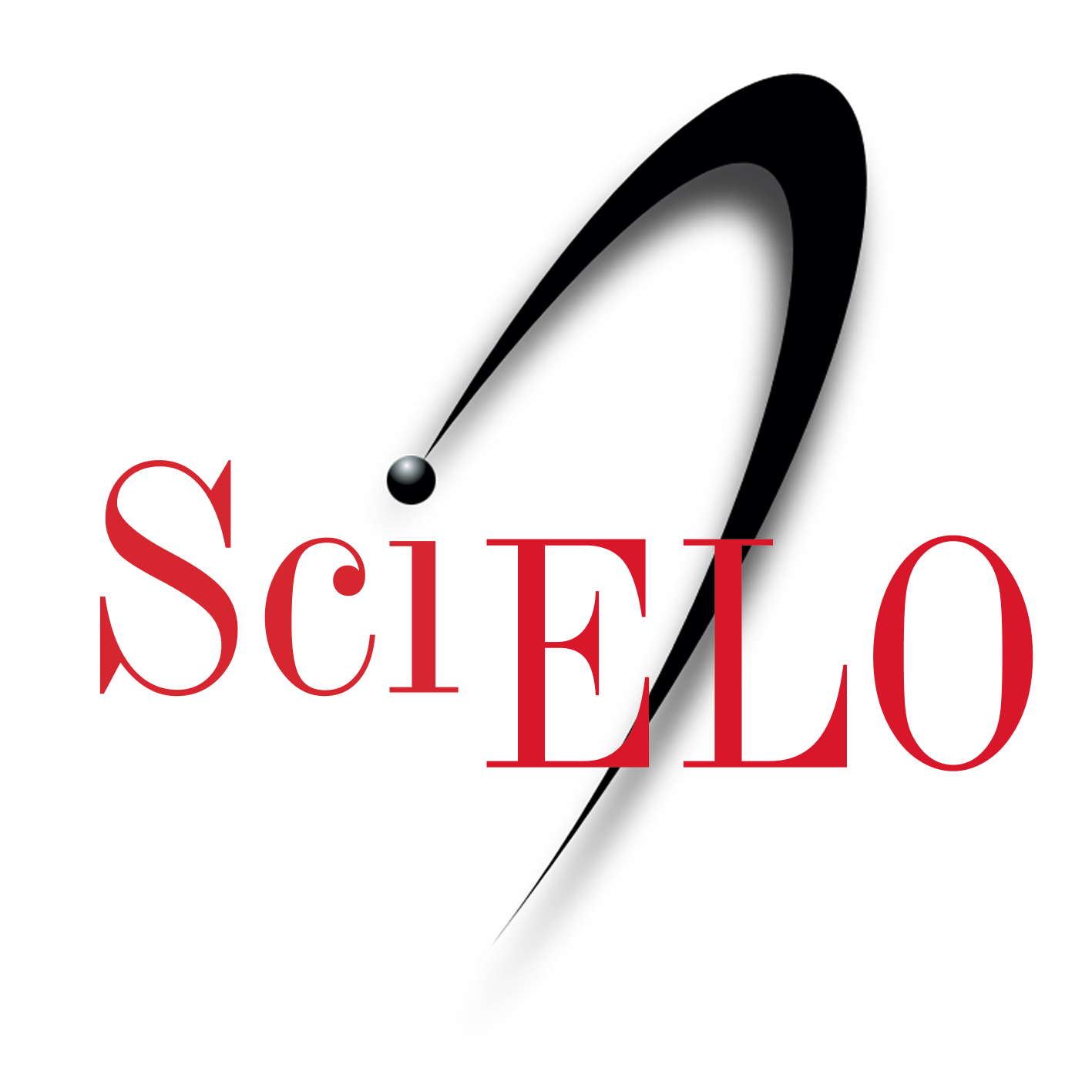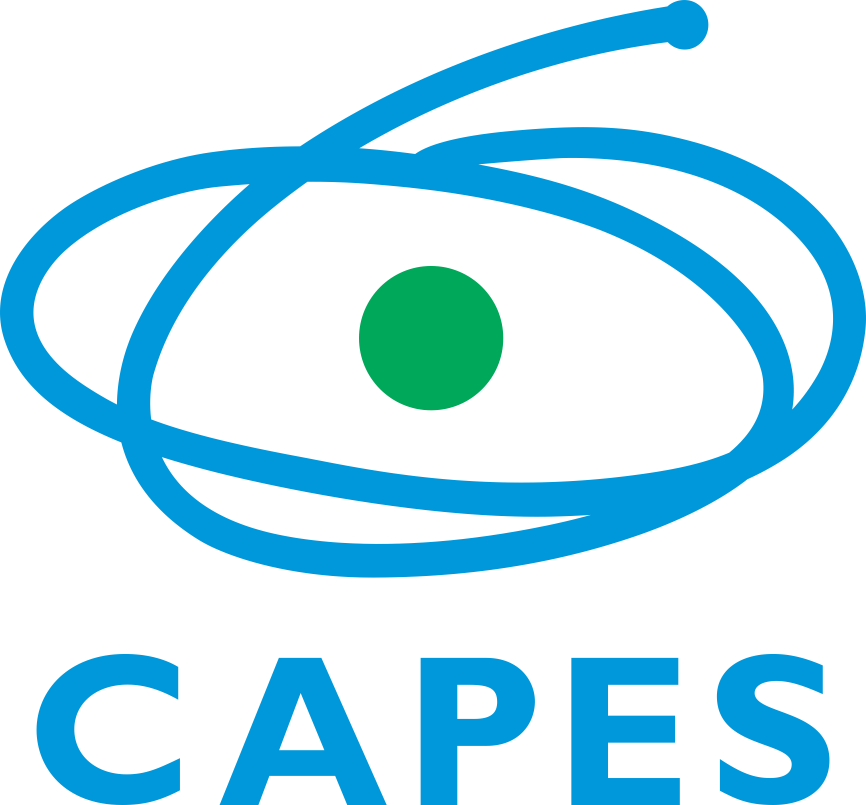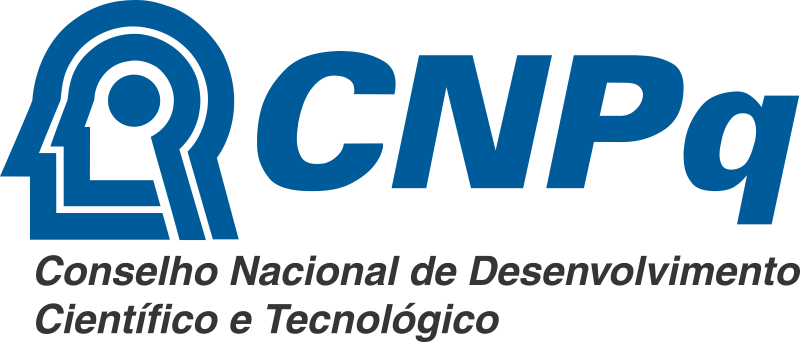Dear Author, to reduce as much as possible the evaluation time of your article, proceed by following the submission steps as follows:
Download links:The Pesq. Vet. Bras. The peer review process has been single-masked since 1981, in which the authors are visible to reviewers. In line with open science practices, in 2024, the journal Pesq. Vet. Bras. offers the possibility of publishing the names of the editors or reviewers responsible for the evaluation and opinions. Authorization to disclose their names must be given by the authors when submitting the manuscript and by the reviewers when filling out the Form on the Open Science Compliance Form. Authors, reviewers, and editors will be offered the option of publishing approval opinions for articles with or without the reviewers' identification.
Compliance with Standards: the Editorial Assistant assesses whether the manuscript aligns with the Instructions for Authors. Otherwise, the manuscript is returned for adjustments. Once the requirements have been met, the manuscript is forwarded to the Editor-in-Chief.
Initial Assessment: The Editor-in-Chief assesses the text's scope, relevance, and contribution to similarity analysis of documents using the Ithenticate.com/ platform. There is confirmation of ethical standards for animal research and certificates from ethics committees. In case of doubt about the documentation presented, the journal may reject the article. Articles that do not fulfill the criteria will be returned to the authors for corrections as repeatedly judged as necessary. Only manuscripts that comply with all journal rules may be for revision.
Editor-in-Chief Review Process: The Editor-in-Chief reviews the manuscript and, if judged appropriate, assigns an Associate Editor, who reviews or selects expert reviewers for further review.
Reviewers' Report: reviewers evaluate the manuscript anonymously and submit their opinions through the ScholarOne system. Based on these opinions, the Associate Editor makes a preliminary recommendation, which is forwarded to the Editor-in-Chief. Authors and referees will be offered the option of publishing approval of their recommendations for articles with or without the identification of the referees in the Form of an attached Supplementary Material.
Final Decision: The Editor-in-Chief makes the final Decision on the manuscript, which may be accepted, rejected or returned for revisions. This Decision is communicated to the authors. The Final Decision (Accepted, Minor revision, Major revision or Rejected) will be received by e-mail by the corresponding author in a ScholarOne form, and the point-to-point revisions to the manuscript.
Receiving the Final Decision: In the case of Minor Revision or Major Revision of the Final Decision, the articles will be returned to the corresponding author for correction, modification, adaptation and justification of the considerations according to the opinion. The revised manuscript must be submitted online on ScholarOne by the same author who submitted the original manuscript. The revised version must be accompanied by a cover letter point-to-point explaining the changes. Suggestions that are not accepted must be justified. Changes must be highlighted in the text. A Rejection Recommendation may be issued when the Editor-in-Chief detects the reviewers' unmet recommendations. After acceptance of the article, the corresponding author will receive an e-mail with instructions for paying the publication fee. Upon confirming the rate, the article goes to layout and exchange of proofs with the authors.
Corrected Article: At this stage, the file with the article in its final phase is sent to the corresponding author for possible reference checking, and the final .pdf version of the article will be sent for approval. Only minor modifications, such as spelling and grammar corrections, are accepted at this phase. Extensive modifications imply review by reviewers and delay in the article's publication. The author will be asked 72 hours to correct and return the revised file for each stage (Reference check and .pdf proof). If there is no response within 72 hours, the Editor-in-Chief considers the unmodified version final, and no further modifications are permitted.
The editorial board of Pesq. Vet. Bras. adopts a copyright policy based on the recommendations of the SciELO Criteria. These recommendations are essential to protect the interests of authors and promote the open and ethical dissemination of scientific knowledge.
Copyright of works published in Pesq. Vet. Bras. are from the authors under the Creative Commons Attribution license, which allows articles to be reused and distributed without restriction as long as the original work is correctly cited.
The authors grant the journal the right of first publication under the CC BY 4.0 License, which allows access, printing, reading, distribution, adaptation and development of other works with recognition of authorship, ensuring that their contributions are acknowledged and appreciated.
Authors are granted the right to undertake additional contracts separately for non-exclusive distribution of the version of the published work, such as publishing in an institutional repository, with due recognition of authorship and initial publication in this journal. Readers can read, download, distribute, print or search the full text of articles without prior permission from the authors or publishers.
PESQUISA VETERINÁRIA BRASILEIRA - Brazilian Journal of Veterinary Research (https://www.pvb.com.br/), edited by the scientific association Colégio Brasileiro de Patologia Animal (CBPA, Pesq. Vet. Bras. publishes original papers on animal diseases within the three following areas: Livestock Diseases (LD), Small Animal Diseases (SA), and Wildlife Medicine (WM). PVB publishes Original Articles, Critical Literature Reviews (upon invitation from the Editor-in-Chief), and Topics of General Interest. Case Reports are accepted only in the Wildlife Medicine Area.
The Original Papers should contain research results not yet published and not submitted to other journals.
Literature Reviews should be critical and consist of subjects of the Author's line of research.
Topics of General Interest should be of great importance and based on the large experience of the authors.
The Case Reports must be unpublished, with clinical importance, conservationist and/or associated with forensic medicine.
The opinions and concepts emitted are the responsibility of the authors. The Editorial Board of the journal, assisted by the peer review, may suggest or ask for modifications in the text. The Author's rights to the accepted papers are preserved.
A maximum of eight authors can only exceed for research papers involving three or more institutions. In articles with more than eight authors, each author's contribution must be present at the end of the manuscript.
Pesq. Vet. Bras. is edited since 1981 and publishes subjects on natural and experimental diseases. The journal publishes results from diagnostic investigations of animals' natural and emerging diseases, especially those affecting herds in Brazil. The submission of topics on animal diseases related to public health is encouraged. In its broad sense, Pathology is the flagship of the journal, including laboratory diagnostic, epidemiology, clinics, and others. Manuscripts on anesthesia, surgical techniques, animal husbandry, and nutrition (except for deficiency diseases or poisonings by any element or food additives) are excluded from this journal's publication interest. Target public of Pesq. Vet. Bras. are veterinary practitioners, pathologists, veterinary diagnostic laboratory staff, toxicologic pathologists, comparative pathologists, medical pathology researchers, and others involved in veterinary diagnostics and animal research across domestic and wildlife species.
The journal is indexed and/or abstracted by: SciELO-Scientific Electronic Library Online; ISI/Thomson Reuters, in its products Science Citation Index Expanded and BIOSIS Previews; CABI, in its key-databases CAB Abstracts and Global Health, and in several derived databases, such as: Animal Science Database and VetMedResources (for the internet), Index Veterinarius and Veterinary Science Database (abstract databases), and Veterinary Bulletin (printed), DOAJ-Directory of Open Access Journals.
Articles are published only in English, including a Portuguese Abstract. The Editorial Board assumes that published articles are not being considered for publication in other journals and have not been published. Articles are peer-reviewed.
Papers will only be published in English. Authors may submit their papers in English or Portuguese (Please check Translation Services on the website of Pesq. Vet. Bras.). Authors from English countries do not need to present a translation letter. To authors from other countries, a certificate of the English's quality, issued by an institution accredited by Pesq. Vet. Bras. (see the list in Language Services) is required.
All authors should register in the ORCID (Open Researcher and Contributor ID) and link it to their ScholarONE profile. The link can be done by editing the user profile on ScholarONE in the option Associate your existing ORCID iD. The ORCID identifiers contribute to the singular identity of the authors and the interoperation and bibliometric processes. Using ORCID, researchers are easily and correctly connected with their research results, publications, and affiliations.
Papers should be prepared in all details according to the style of the journal, in order to be peer-reviewed. Tables and Figures should be submitted separately from the text.
For the preparation of the manuscript, authors must follow the format indicated by the journal, which can be found under "Instructions for Authors”, "Submission of articles" in the journal webpage (http://www.pvb.com.br/instructions_to_authors.pdf). Submission of articles outside the presentation standards will not be considered for publication and will be immediately rejected. Dear Author, to shorten the time most possible for the evaluation of your article, act following the steps for submission, as shown below:
Papers to "Pesquisa Veterinária Brasileira" (PVB), a Brazilian Journal of Veterinary Research, are submitted in Word online through ScholarOne, link https://mc04.manuscriptcentral.com/pvb-scielo
Organization and preparation of the manuscript
- Organize the article in TITLE, ABSTRACT, RESUMO, INTRODUCTION, MATERIALS AND METHODS, RESULTS, DISCUSSION, CONCLUSION(S) (the last three preferably as separate chapters), Acknowledgements, Conflict of interest statement, and REFERENCES:
- The TITLE should be concise and indicate the article's content; inform details of scientific identification in the MATERIALS AND METHODS.
- Names of authors with several first and family names should be shortened, e.g., simplify Claudio Severo Lombardo de Barros to Claudio S.L. Barros or Barros C.S.L. The Corresponding Author should guarantee contact with the Editorial Board of PVB.
- The Heading of the ABSTRACT should contain the shortened and inverted names of the authors, year, title, and the postal address of the laboratory or institution where the central part of the research was done. Compare the authors of the paper and their listing in the Heading of the Abstract to avoid discrepancies.
- The footnote of the first page should contain the complete professional address of each Author (in the language of the Author's country, Portuguese, Spanish, English, etc.) as well as the underlined e-mail of the Corresponding Author.
- The ABSTRACT should be a well-explained version of the Portuguese RESUMO, followed by "INDEX TERMS," which should include terms of the title, as they are not only Additional Index Terms.
- The RESUMO should contain (1) the title [within brackets and in bold type⦐, (2) what has been investigated, indicating the materials and methods used, (3) the most important results, and (4) the conclusion, followed by "TERMOS DE INDEXAÇÃO" (which also include words of the title, as they are not only Additional Index Terms).
- The INTRODUCTION must be short, with a citation of the specific literature, followed by the research's objective.
- In MATERIALS AND METHODS, provide all data necessary to repeat the study.
- In RESULTS, present the data obtained in a concise form.
- In DISCUSSION, confront the results with the literature. Avoid mentioning research development or future planning to avoid the Journal's commitment to publish the results.
- Base the CONCLUSIONS only on your results.
- Do not mention Acknowledgements in the text or footnotes, but after CONCLUSIONS.
- State any conflict of interest or "none" if t is the case.
- The REFERENCES should include all citations presented in the text. Write the list of References in alphabetical and chronological order, in the language in which they were consulted (Portuguese, English, Spanish, German, ...), beginning with the first Author's family name, followed by all other authors of the respective reference, in high and low case letters. Each Author's name should be divided only by a comma, followed by year, title, and the publication data (unabbreviated in case of doubt about abbreviation), according to <http://www.pvb.com.br/>.
- The style of the Journal has to be met as follows:
- Font Cambria at 10 pitch, simple space between lines; page format A4, with 2cm margins (superior, inferior, left and right), text in one column justified. Place Figure captions below the list of References; do not repeat the captions along with the images of the Figures. Submit Figures and Tables separately.
- ABSTRACT and RESUMO are written in only one paragraph and should not contain references.
- The articles should be concise and, whenever possible, written in the past tense.
- The scientific names should be presented in full (p.ex. Palicourea marcgravii) at the beginning of each chapter (Title, Abstract, Resumo, Introduction, etc.) when they appear for the first time, followed with the abbreviation of the genus (p.ex. P. marcgravii).
- In the Title of Tables and Figure captions, write the scientific names in full.
- In the text, calls to footnotes are given in Arabic numbers, in crescent order through the whole paper, without using "Insert final note" of Word. Note: Do not use spaces between numbers and their units to avoid separating them into two lines (p.ex.: 100ppm, 10mm, 50cm, 18x10cm, P<0.05. The abbreviation for the number is “nº” and not “no”; for degree Celsius “oC” and not “ºC”.
- Tables and Figures should be cited in the text with their respective numbers in crescent order.
- Abbreviations of institutions should be put within parentheses after the institution's full name when presented for the first time.
- Citations of the literature in the text are given by "author and year" (p.ex. Pierezan 2021). Cite papers with two authors using both names (p.ex. Giaretta & Pimentel 2020). Cite papers with more than two authors in the text by the first Author's name followed by "et al." and the year (p.ex. Gava et al. 2019). If two articles' citation is identical, make the distinction by adding small letters after the year of publication (p.ex. Panziera 2018a, 2018b). The citation order in the text should be chronological (p.ex. Badial et al. 2017, Armién et al. 2018).
- Consult the full text of all cited articles; if not possible, cite the original reference in the manuscript text as, p.ex., Bancroft (1921); and then, in the List of References, it should appear as Bancroft 1921. .......... title. ... Journal…. (Apud Suvarna & Layton 2013). Also, include this in-full-consulted reference in the List of References.
- The use of "personal communication" and "unpublished data" should be exceptional and cited in the text as Author and Year (Barbosa 2016) and the List of References: Barbosa 2016. Personal Communication (Universidade Federal do Pará, campus Castanhal, Brazil).
- Figure captions (p.ex. "Fig.3. ………..") should be sufficiently informative for understanding (because Figures are independent of the text).
- Title of Tables should be written in bold, and the Heading (titles of the columns) should be in clear (not bold), written in high and low case letters, and separated by two long horizontal lines. There are no vertical lines and no gray bottom; exceptionally, horizontal lines can exist. The calls for footnotes should be in small letters or other signs but not in Arabic numbers. Tables should be submitted in .doc or .docx Word format (not as images) to allow corrections according to the Journal's style.
- Submit complex data as graphics (should be referred to as Figures) in 2D without gray bottom and horizontal lines. Write graphics, including text, with Cambria at 10 pitch.
- Figure presentation:
- Format and dimension. Images must be in TIF format, RGB channel, 85mm long, and 300 dpi resolution (pixel/inch) for color figures and 600 dpi (pixel/inch) for black & white figures (graphics and maps).
- Numbering. The figures must be named separately and identified only by numbers in the order they are cited in the text (Fig. 1, Fig. 2, Fig. 3, etc.). To identify the figures, do not use letters (Fig. 1A, 1B, 1C, etc.).
- Identification of structures. If it is necessary to highlight specific structures within the image, use font "Cambria 8 points", black or white, or black or white arrows depending on the figure's background.
- Grouping of figures. Figures can be grouped on boards. Make sure all figures are named sequentially. All figures that will compose the board must be sent separately and, preferably, have the exact dimensions. If necessary, a sketch with the layout can be suggested. However, the final grouping will be done by the image editor.
- Micrographs. Scale bars are not mandatory.
- Subtitles. Each figure must have a self-explanatory legend. It should describe what is seen in the image and explain any abbreviations or symbols used. Example of caption format:
- "Fig.1. Description of the image. Diagnosis, organ or tissue, animal species, case number. Histochemical staining method (HE, PAS, etc.) or immunohistochemical (S100, Ki67, Vimentin, etc.)".
- When describing immunohistochemistry results, use the term "immunolabeling" instead of "staining" or "positive." Indicate where "immunolabeling" occurred (nuclear, cytoplasmic, and membranous) and to what extent. Finally, the objective lens used in micrographs must be indicated (obj.10x, obj.20x, obj.40x, etc.). Figures legend must appear in the main manuscript file, after the References.
- All references cited in the text should be included in the List of References. Before submitting the paper, discrepancies have to be corrected by the Author. The system ScholarOne blocks automatically if such disparities exist.
- Examples for References:
- Articles published in scientific journals
- Groch K.R., Díaz-Delgado J., Santos-Neto E.B., Ikeda J.M.P., Carvalho R.R., Oliveira R.B., Guari E.B., Flach L., Sierra E., Godinho A.I., Fernández A., Keid L.B., Soares R.M., Kanamura C.T., Favero C., Ferreira-Machado E., Sacristán C., Porter B.F., Bisi T.L., Azevedo A.F., Lailson-Brito J. & Catão-Dias J.L. 2020. The pathology of cetacean morbillivirus infection and comorbidities in guiana dolphins during an unusual mortality event (Brazil, 2017-2018). Vet. Pathol. 57(6):845-857. <https://dx.doi.org/10.1177/0300985820954550> <PMid:32964811>
- Molossi F.A., Cecco B.S., Pohl C.B., Borges R.B., Sonne L., Pavarini S.P. & Driemeier D. 2021. Causes of death in beef cattle in southern Brazil. J. Vet. Diagn. Invest. 33(4):677-683. <https://dx.doi.org/10.1177/0300985820954550> <PMid:32964811>
- Bertolini M., Schwertz C.I., Vielmo A., Piva M.M., Bilhalva L.C., Pavarini S.P., Driemeier D. & Sonne S. 2021. Pathological and microbiological findings in fatal cases of salmonellosis in captive Bothrops snakes in southern Brazil. J. Comp. Pathol. 186:7-12. <https://dx.doi.org/10.1016/j.jcpa.2021.04.011>
- Books
- Marsh P. & Martin M. 1992. Oral Microbiology. 3rd ed. Chapman and Hall, London, p.167-196.
- Tokarnia C.H., Brito M.F., Barbosa J.D., Peixoto P.V. & Döbereiner J. 2012. Plantas Tóxicas do Brasil para Animais de Produção. 2ª ed. Helianthus, Rio de Janeiro, p.305-348.
- (Note: The First Letter in the Words of the Title of Books Should be Capital.)
- Chapters of books
- Uzal F.A., Plattner B.L. & Hostetter J.M. 2016. Alimentary system, p.1-257. In: Maxie M.G. (Ed.), Jubb, Kennedy and Palmer's Pathology of Domestic Animals. Vol.2. 6th ed. Elsevier, St Louis, Missouri.
- Barros C.S.L. 2007. Doenças víricas: leucose bovina, p.159-169. In: Riet-Correa F., Schild A.L., Lemos R.A.A. & Borges J.R.J. (Eds), Doenças de Ruminantes e Equídeos. Vol.1. 3ª ed. Pallotti, Santa Maria, RS.
- Tokarnia C.H., Brito M.F., Barbosa J.D., Peixoto P.V. & Döbereiner J. 2012. Plantas que afetam o funcionamento do coração, p.27-94. In: Ibid. (Eds), Plantas Tóxicas do Brasil para Animais de Produção. 2ª ed. Helianthus, Rio de Janeiro.
- Dissertations and Theses
- Rech R.R. 2007. Alterações no encéfalo de bovinos submetidos à vigilância das encefalopatias espongiformes transmissíveis. Tese de Doutorado, Universidade Federal de Santa Maria, Santa Maria. 228p.
- (Note: Use articles that originated from dissertations or theses instead of these).
- Abstracts published in Events
- Massa A.T., Potter K.A. & Bradway D. 2016. Epizootic bovine abortion outbreak in Eastern Nevada cattle. Annual Meeting American College of Veterinary Pathologists (ACVP), New Orleans, Lousiana. (Abstract D-50)
- Mendonça F.S., Almeida V.M., Albuquerque R.F., Chaves H.A.S., Silva Filho G.B., Braga T.C., Lemos B.O. & Riet Correa F. 2016. Paralisia laríngea associada à deficiência de cobre em caprinos no semiárido de Pernambuco (IX Endivet, Salvador, BA). Pesq. Vet. Bras. 36(Supl.2):50-51. (Resumo)
- Pierezan F., Lemos R.A.A., Rech R.R., Rissi D.R., Kommers G.D., Cortada V.C.L.M., Mori A.E. & Barros C.S.L. 2007. Raiva em equinos. Anais XIII Encontro Nacional de Patologia Veterinária, Campo Grande, MS, p.145-146. (Resumo)
- (Note: If available, look for the full articles instead of just the abstract).
After communicating the acceptance for the article, the author will be asked to pay the publication fee.
For foreigners authors: The corresponding author must pay a Word Charge of $0.16 (sixteen US cents) per word of the submitted manuscript (except for the list of references). Publishing up to 4 photos will not be charged. Each additional photo will cost $10.00 (ten US dollars). When photos are organized on boards, for payment purposes, each photo will count individually.
For Brazilian authors: The corresponding author must pay a Word Charge of R$ 0.50 (Brazilian reais, fifty cents per word) for the submitted manuscript (except for the list of references) in English. Publishing up to 4 photos will not be charged. Each additional image will cost R$ 50.00 (Brazilian reais, fifty reais per photo). Even when photos are organized on boards, for payment purposes, each photo will count individually. Brazilian authors who submit manuscripts in English will be responsible for translating and sending a letter from a professional translation company.
After acceptance, authors have four months to pay the publication fee.
To increase international visibility and improve the impact factor of the Pesquisa Veterinária Brasileira, as of January 2019, all articles are being published in English.
PVB accepts submission of articles in English or Portuguese. However, articles submitted in Portuguese, once accepted, will be translated by Editora Cubo (the amount charged for publication, including translation R$ 2.500,00 (US$ 800.00).
PVB encourages authors to submit their articles in English (the amount charged for publication R$ 1.500,00 (US$480.00)). PVB editorial board suggests a number of translation companies listed below. In this case, the costs of translation and/or revision are the responsibility of the authors. To prove the quality of English, an English language certificate is required, except for articles, in which one of the authors is a native English-speaking country.









